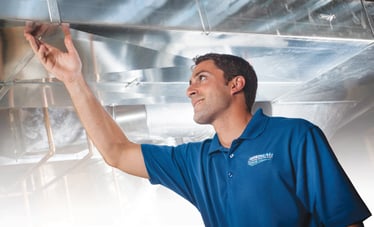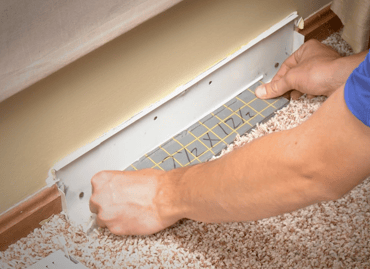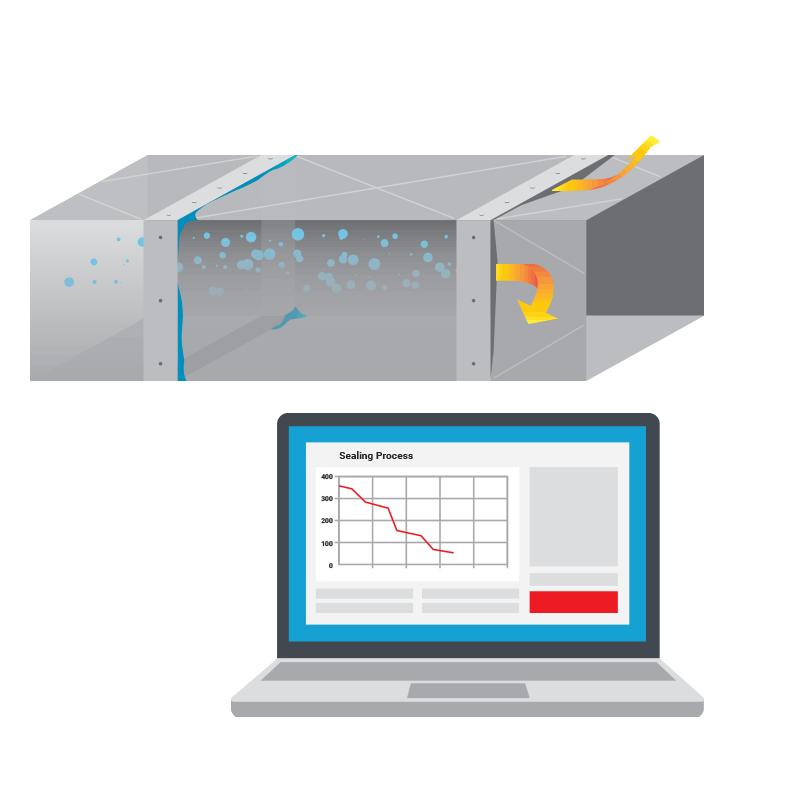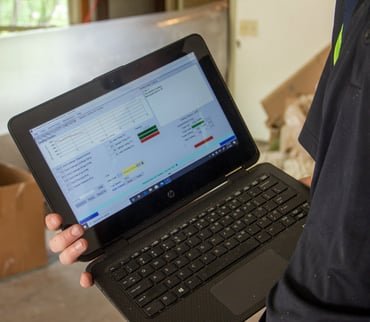
Results: After the Aerobarrier process, air leakage is reduced by up to 90%, resulting in improved energy efficiency and reduced energy costs. Additionally, the building envelope becomes airtight, which improves indoor air quality and reduces the risk of drafts.


Pre-Inspection: The Aeroseal technician will inspect the HVAC system to identify the leaks and assess the system's suitability for the Aeroseal process.
Step 1
Step 2
Preparation: Before the sealing process begins, all windows, doors, and any other openings are covered with plastic to protect them from the sealant. All ventilation systems and equipment that draw air from the outside are also turned off to prevent the sealant from entering them.


Sealing the Leaks: The Aeroseal machine is connected to the ductwork and calibrated to deliver the sealant particles at the appropriate rate. The sealant particles are then blown into the ductwork, where they accumulate at the leaks and gaps and bond to the edges of the openings, eventually sealing them.


Step 3


Step 4
Post-Inspection: After the sealing process is complete, the technician will perform a post-inspection to verify that all of the leaks have been sealed


Step 5
The process is monitored with the building's air pressure to ensure that the sealant is being applied uniformly. After the Aerobarrier process is complete, air leakage is reduced by up to 90%, resulting in improved energy efficiency, reduced energy costs, and enhanced indoor air quality. Overall, Aerobarrier is an effective solution for improving the energy efficiency of buildings while maintaining healthy indoor air quality.


